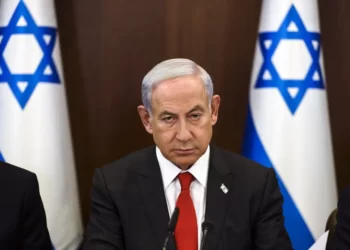Crude oil prices started the week with a decline as traders closely monitored the ongoing ceasefire discussions between Ukraine and Russia, which could potentially lead to an increase in Russian crude supply to global markets.
This development, coupled with OPEC+ production adjustments and the impact of U.S. sanctions on Iran, has created an uncertain outlook for oil prices in the coming weeks.
“Expectations of progress in peace negotiations between Russia and Ukraine and a potential easing of U.S. sanctions on Russian oil pressured prices lower.”
Toshitaka Tazawa, an analyst at Fujitomi Securities
At the time of writing, Brent crude was trading at $71.92 per barrel, while West Texas Intermediate (WTI) crude stood at $68.06 per barrel.
The dip follows two consecutive weeks of gains, primarily driven by supply constraints from U.S. sanctions on Iran’s energy sector and OPEC+ efforts to enforce production quotas.
Toshitaka Tazawa added that investors are waiting for clearer signals before making large market moves, particularly regarding future OPEC+ production trends beyond April.
Similarly, Yeap Jun Rong, a market strategist at IG, emphasized that a ceasefire could significantly alter the global oil market by easing supply constraints.
“Ukraine-Russia ceasefire talks raise the prospects of increased Russian exports on an eventual resolution, while the OPEC+ production hike as early as April points to further supply additions, which may be difficult to be fully absorbed by demand factors.”
Yeap Jun Rong, a market strategist at IG
Despite prevailing uncertainties in the market, OPEC+ confirmed its decision to ease production cuts in April, adding 138,000 barrels per day (bpd) back into the market. This move, though modest, could be reversed if oil prices remain weak.
The oil cartel has been gradually increasing production following a series of deep output cuts imposed in 2022 to stabilize the market. However, concerns remain over whether all members will adhere to their assigned production quotas.
“Laggard members have submitted plans to compensate for their overproduction, but questions remain about whether they will actually stick to the compensation plan and cut output.”
Warren Patterson and Ewa Manthey commodity analysts from ING
U.S. Sanctions on Iran and Market Speculation

The anticipation of supply constraints due to U.S. sanctions on Iran has also contributed to volatility in the oil market.
According to analysts at ING, speculative buying has increased, with Brent crude futures seeing a net long position increase by nearly 53,000 lots to a total of 206,138 lots.
Warren Patterson and Ewa Manthey, commodity strategists at ING explained, “The change was mostly driven by new buying but there was some short covering as well.”
While traders remain optimistic about tighter supply supporting prices, the looming possibility of increased Russian oil exports and the uncertain effectiveness of U.S. sanctions have led to hesitancy in making aggressive market moves.
A successful peace deal could ease geopolitical tensions and increase Russian crude supply, leading to further downward pressure on prices.
The demand for crude oil in key markets, particularly China, remains a crucial indicator of price movement.
The recent dip in crude oil prices reflects the complex interplay of geopolitical developments, supply chain adjustments, and market speculation.
While traders are closely monitoring peace talks between Ukraine and Russia, the uncertain future of OPEC+ production plans and U.S. sanctions on Iran continue to fuel volatility.
As Toshitaka Tazawa aptly summarized, “Investors are holding back on large positions as they evaluate future OPEC+ production trends beyond April.”
The coming weeks will be crucial in determining whether crude oil prices will stabilize, recover, or face further declines based on global supply and demand dynamics.




















